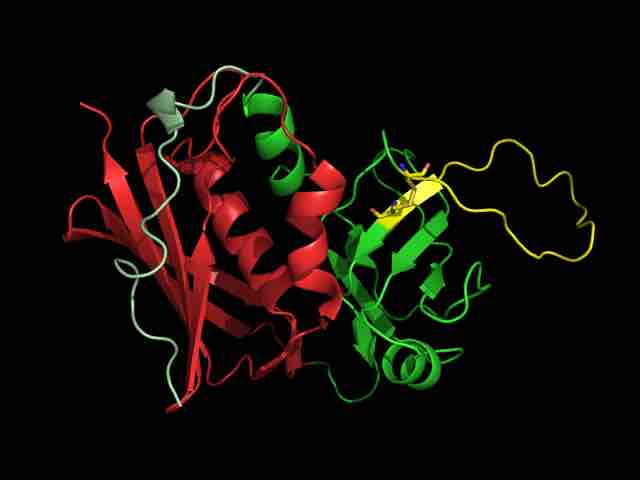Superantigens (SAgs) are proteins that cause the T-cells of the immune system to over-react to infection. They are produced by certain infectious bacteria and viruses. The immune system over-reaction to the antigen causes a group of diseases that manifest in fever and shock, such as food poisoning, toxic shock syndrome, and Kawasaki disease. Common bacterial species that may use a superantigen as part of their virulence strategy are staphylococci and streptococci.

A Superantigen
Structure of a typical bacterial superantigen.
These bacteria usually live harmlessly on the body, but can cause infections in certain circumstances. The superantigens of each species are, like antigens, molecules the immune system recognizes as being foreign. Superantigens cause symptoms of illness by tricking the T-cells of the immune system into over-reacting to these molecules. Parts of a bacterium or a virus are usually recognized by the macrophage cells of the immune system. The macrophage ingests the foreign invaders and breaks them down. Then the macrophage takes parts of the broken-down invader or other molecules that it ingested and posts the fragments on the outside of the cell using a major histocompatibility complex (MHC) to hold the fragment.
The large number of activated T-cells generates a massive immune response which is not specific to any particular epitope on the SAg. This undermines one of the fundamental strengths of the adaptive immune system, that is, its ability to target antigens with high specificity. More importantly, the large number of activated T-cells secretes large amounts of cytokines, the most important of which is Interferon gamma. This excess amount of IFN-gamma is in turn what activates the macrophages.